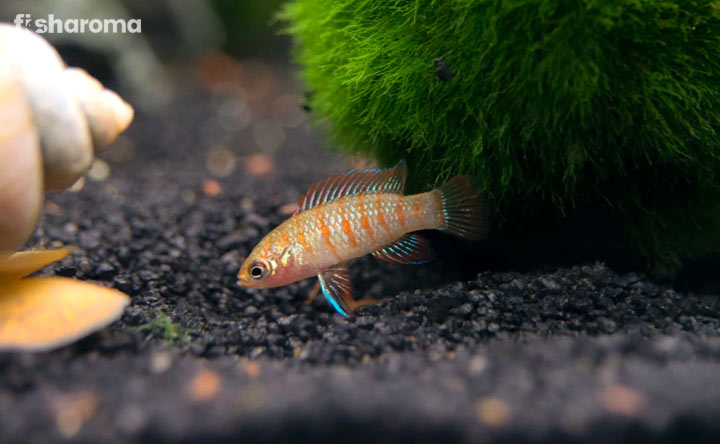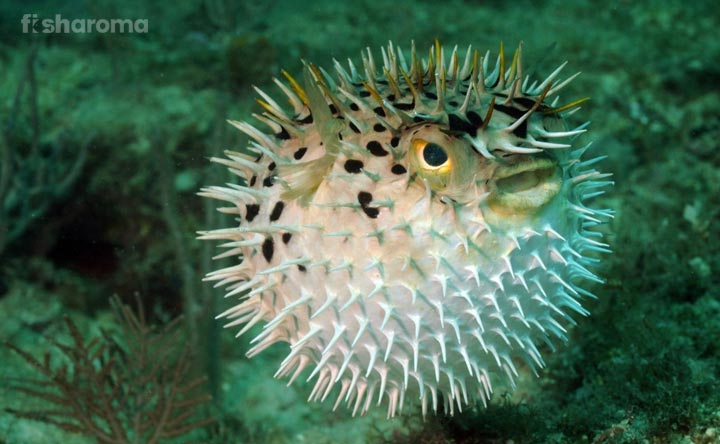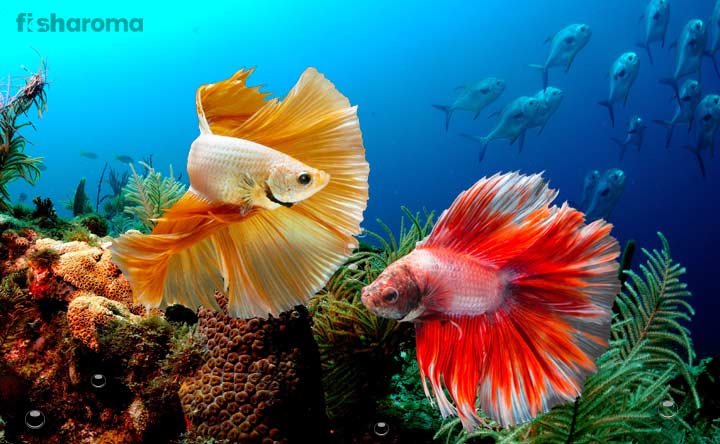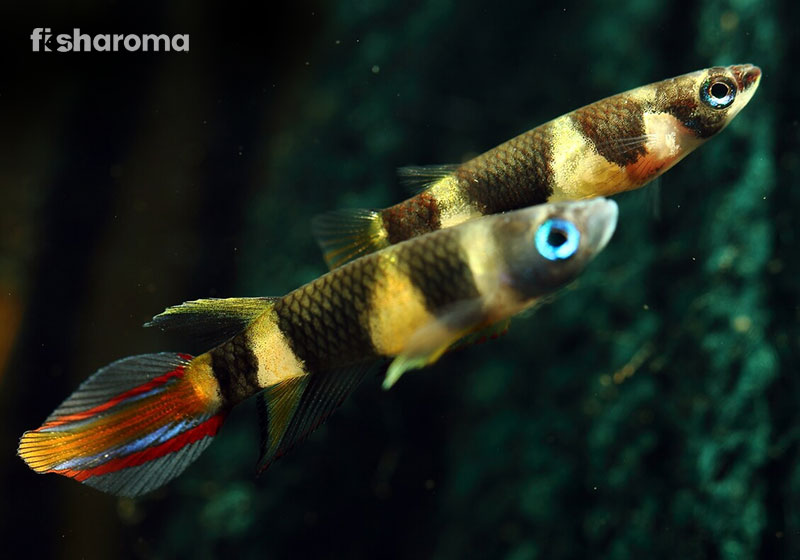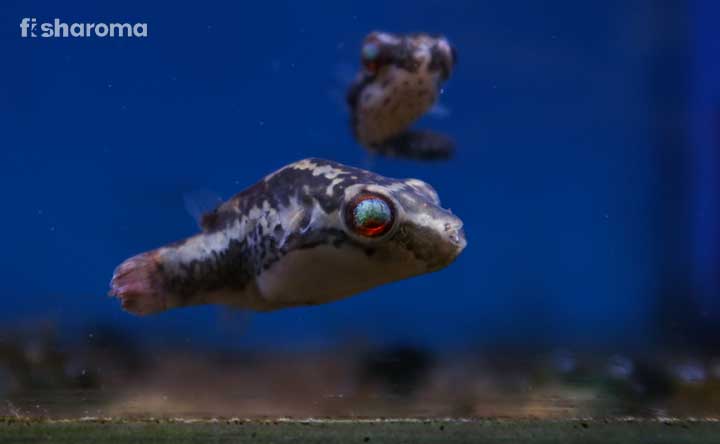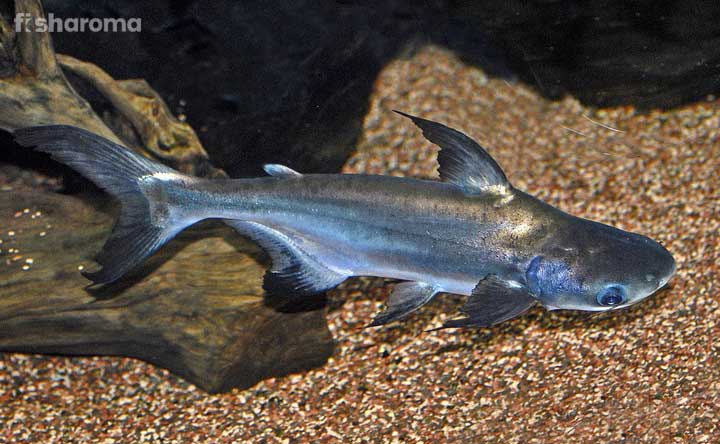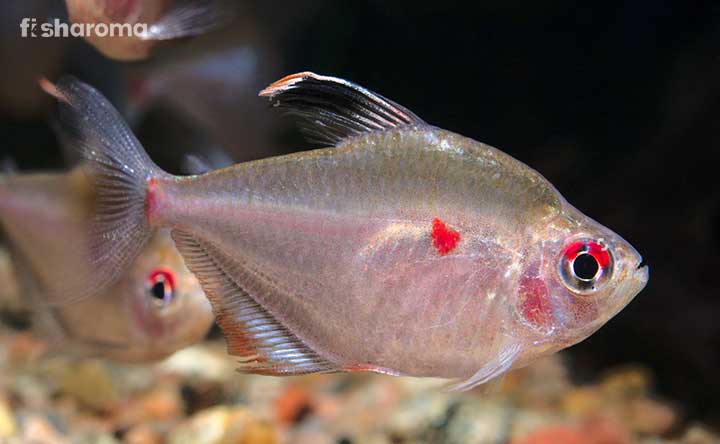21 Most Popular Freshwater Fish That You Need to Bring Home Today
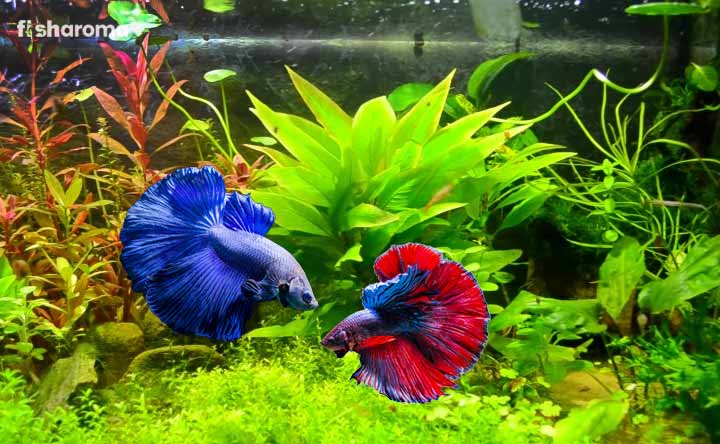
- Factors to Keep in Mind before Selecting a Freshwater Fish
- The Most Popular Freshwater Fish for Your Aquarium
- Convict Cichlid
- Betta (Siamese Fighting Fish)
- Molly
- Guppy
- Bristlenose Pleco
- Angelfish
- Discus
- Green Swordtail
- Neon Tetra
- Oscar
- Goldfish
- Pearl Gourami
- Honey Gourami
- Platy
- Harlequin Rasbora
- Clown Loach
- Killifish
- Cherry Barb
- Zebra Danio
- Pictus Catfish
- Red Tail Shark
- Summary
Fishkeeping is one of the oldest hobbies that have been existing since medieval times, and its popularity has only increased over time. Among them, freshwater fish are the most common form of pets in the USA, comprising a staggering figure of over 171 million. Simple and comparatively easy to care for, the freshwater aquarium business is a multi-billion dollar industry today. There are over 5,300 species of freshwater fish that are raised in captivity by aquarists across the globe. But, of course, the demands for all of them are not the same. This is what this article is all about – figuring out the popularity of these freshwater fish. So, let’s find out which one among them makes the cut.
Factors to Keep in Mind before Selecting a Freshwater Fish
The selection of the freshwater fish that you bring home will be governed by a number of factors. The primary among them are as follows:
Size
This is all about feasibility. Your pet has to be able to live and swim freely in your tank. It doesn’t make sense to fit a 24” (60 cm) species in a 5 or 10-gallon tank since it would die of claustrophobia.
A small fish can exist in a large tank, but not the other way around. You also need to remember that at the time of buying, your fish may be small, but with time, it will grow. You either have to use a large tank from the start or have to shift the grown-up fish to a separate large tank.
Temperament
The temperament of your pet would dictate its relationship with its tankmates. Some fish get aggressive when they are alone; others get aggressive when their space is invaded by others. There are also species that are peaceful by nature and get threatened by the fierceness of their tankmates.
It is therefore important to understand whether the fish you are buying is aggressive, semi-aggressive or peaceful towards its tankmates (which includes both its own species and other species) or not.
Care Level
If you are getting into the fishkeeping world for the very first time, it is always a good idea to go for a fish that is easy to care for. While going through our list of popular freshwater fish, look for the ones whose care-level is ‘easy’ or ‘intermediate’.
This care level refers to whether a particular species has highly specific demands about its water and tank conditions or not, whether it is fussy about the kind of food it consumes or not, whether its breeding is difficult or not, among others. If you are a beginner, you definitely want to avoid as many complexities as possible.
The Most Popular Freshwater Fish for Your Aquarium
This list has been compiled taking into account the demands of freshwater fish across the globe. However, please remember that it isn’t a chronological ranking of the popularity of freshwater fish. Feel free to choose any one among them.
Convict Cichlid

| Scientific Name | Amatitlania nigrofasciata |
| Family | Cichlidae |
| Color | Black and White |
| Size | 6” (15 cm) |
| Origin | Central America |
| Diet | Omnivore |
| Lifespan | 8 Years |
| Temperament | Aggressive |
| Compatibility | Low |
| Tank Size | 30-Gallons |
| Care Level | Moderate |
Native to Central America, Convict Cichlids are one of the most famous members of the Cichlidae family that are found in abundance in Guatemala, Costa Rica, Panama, and Honduras. In their natural habitat, they live in crevices and cracks of the shallow rocky areas where the water flows from small streams to large fast-flowing rivers.
Coming to their appearance, they have a bluish-gray oval disk-shaped body with prominent black stripes. Along with a regular set of teeth, they are also pretty infamous for their pharyngeal set of teeth that are located in their throat.
Omnivores by nature, you can feed them Blackworms, Bloodworms, Brine Shrimp, Daphnia, blanched vegetables such as carrots, broccoli, and lettuce along with flakes and pellets.
Since they are highly aggressive that are prone to attack small species, you should keep them with similarly-sized or larger species such as Giant Danio, Pictus Catfish, Jack Dempsey, Jewel Cichlid, Firemouth Cichlid, among others.
Betta (Siamese Fighting Fish)

| Scientific Name | Betta splendens |
| Family | Osphronemidae |
| Color | Multi-color |
| Size | 3” (7.6 cm) |
| Origin | Southeast Asia |
| Diet | Insectivore |
| Lifespan | 2-4 Years |
| Temperament | Aggressive |
| Compatibility | Low |
| Tank Size | 5-Gallons |
| Care Level | Intermediate |
When it comes to ornamental fish, you will always find Bettas to be at top of the list. A member of the Osphronemidae family, Bettas have originated from Southeast Asia (The Mekong basin of Thailand and Malaysia, to be specific) and are found in marshy lands, floodplains, rice paddies, slow-moving streams, and swamps.
They have a torpedo-shaped body that is accentuated by their flowing fins that come in a variety of colors such as red, blue lavender, yellow, gold, white, purple, among others. These fins make them highly in demand. In fact, the fins are so intricately designed that this species can be categorized as per the designs of their fins such as Crowntail, Rosetail, Half-Sun, among others.
Although they have a short lifespan of 2-4 years, every moment with them will be worth it since they will keep you captivated with their active behavior. However, beware of its aggressiveness and never place two Bettas in the same tank, especially two males; else they will fight themselves to death. There is a reason why they are known as Siamese Fighting Fish.
Molly

| Scientific Name | Poecilia sphenops |
| Family | Poeciliidae |
| Color | Varied |
| Size | 4.5” (11 cm) |
| Origin | North America and South America |
| Diet | Omnivore |
| Lifespan | 5 Years |
| Temperament | Peaceful |
| Compatibility | Moderate |
| Tank Size | 15-Gallons |
| Care Level | Easy |
An ideal beginner-friendly fish, Mollies belong to the Poeciliidae family. Coming in a bunch of different colors, they light up your aquarium like it is their job. Although they are native to North and South America, they have now been introduced to a bunch of other countries such as Japan, Singapore, Taiwan, Israel, Colombia, and even Eastern Europe.
Mollies are known for their graceful appearance that is reflected in their laterally compressed, elongated body. It’s fascinating to watch these active swimmers roaming from one end to another end of your fish tank. Interestingly, the females here are larger than the males.
Now although they are omnivores by nature, they have a high requirement of herbivorous food in the form of algae and vegetation. Mollies are a peaceful species that make for a great community fish.
As for tankmates, you can keep them with peaceful species such as Dwarf Gourami, Yoyo Loach, Platy, Cherry Barb, Zebra Loach, Harlequin Rasbora, Corydoras Catfish, Rosy Barb, and Danio. They can also co-exist with peaceful invertebrates. On the other hand, avoid keeping them with large and aggressive species. Cichlids are one such species that are incompatible with Mollies.
Guppy

| Scientific Name | Poecilia reticulata |
| Family | Poeciliidae |
| Color | Multi-Color |
| Size | 0.6 – 2.4” (1.5-6 cm) |
| Origin | Southern and Central America |
| Diet | Omnivore |
| Lifespan | 2 Years |
| Temperament | Peaceful |
| Compatibility | Moderate |
| Tank Size | 5-Gallons |
| Care Level | Easy |
A highly adaptive species, Guppies are widely distributed in Central and South America, specifically in Brazil, Barbados, Venezuela, Trinidad, and Guyana. Since they breed easily and quickly, aquarists are able to create a wide range of strain with different kinds of color patterns. Similar to Betta, they also have huge variations in their tail fin, which includes Sword, Double Sword, Roundtail, Pintail, etc.
Guppies inhabit ditches, canal, warm springs, mountain streams and turbid ponds in the wild. Despite the fact that they are not a schooling fish, you will often find them shoaling in the wild. Their hardy and hassle-free nature make them perfect for beginner aquarists.
Although a 5-gallon tank will suffice for three Guppies, as soon as they start breeding, try and shift them to a 10-20-gallon tank.
These omnivores are open to consuming all types of food – live, frozen, flakes. An ideal diet for them includes diatoms, zooplankton, plant matter, algae, insect larvae, invertebrates, and small insects.
Bristlenose Pleco

| Scientific Name | Ancistrus cirrhosus |
| Family | Loricariidae |
| Color | Brown, Black |
| Size | 5” (12 cm) |
| Origin | Amazon River in South America |
| Diet | Mostly Herbivore |
| Lifespan | 5 Years |
| Temperament | Peaceful |
| Compatibility | Moderate |
| Tank Size | 25-Gallons |
| Care Level | Easy |
The natural tank-cleaners, Bristlenose Plecos blend perfectly with the natural environment, making it extremely difficult to spot them. So, as you can see, they are great at camouflaging. Their tank-cleaning ability, especially their ability to get rid of algae makes them an absolute favorite of aquarists.
Native to the tributaries of the Amazon River, specifically the Paraná River basin in South America, these peaceful freshwater species are also known as Bushy Nose Catfish and Jumbie Teta. The most distinguished feature of their body is the tentacles on their heads, which are, by the way, fleshier and longer in males. Depending on their habitat, there could be yellow or white spots found on their black, brown, gray, or olive body.
Coming to their food habits, they mostly consume algae, plant matter, and blanched vegetables such as cucumbers, zucchini, lettuce, carrots, spinach, peas, among others.
They are also able to survive on low oxygenated water, which speaks volumes about their adaptability. However, that doesn’t mean that you will purposely keep the oxygen level low in your tank because their ability to survive in low oxygenated water is on a temporary basis.
Angelfish

| Scientific Name | Pterophyllum scalare |
| Family | Cichlidae |
| Color | Silver with black bands |
| Size | 6” (15 cm) |
| Origin | South America |
| Diet | Omnivore |
| Lifespan | 10 Years |
| Temperament | Semi-aggressive |
| Compatibility | Moderate |
| Tank Size | 20-Gallons |
| Care Level | Easy |
Inhabiting the slow-moving streams, floodplains, and swamps of the Amazon River basin, the popularity of Angelfish is so high that they are even known to those who are not interested in fishkeeping. They are native to Brazil, Peru, and eastern Ecuador; and they were introduced in Europe in the 1920s and in the United States in the 1930s.
Mostly, Angelfish have a silver-colored body with black bars, but they have also been spotted with a completely black, gold or platinum body. There is also a marbled version of this species wherein they have irregular, jagged bands instead of their usual straight black bands. Their arrowhead-shaped wide-body clubbed with a triangular snout is supported by trailing pectoral and dorsal fins and fan-shaped caudal fin, which gives them their spectacular appearance.
Being a member of the Cichlidae family, Angelfish love to dig. Thus, try and provide a fine-grained, soft substrate to them. These omnivorous species can be fed both live food and flake food.
Discus

| Scientific Name | Symphysodon aequifasciatus (Blue Discus) |
| Family | Cichlidae |
| Color | Depends on Variant |
| Size | 8-10” (20-25 cm) |
| Origin | South America |
| Diet | Omnivore |
| Lifespan | 10 Years |
| Temperament | Peaceful |
| Compatibility | Low |
| Tank Size | 50-Gallons |
| Care Level | Difficult |
Known as the “King of Aquarium Fish”, Discus Fish have a mesmerizing disc-shaped body that are laterally compressed and comes in various shades and patterns. Their rounded anal and dorsal fins along with their pronounced caudal and pelvic fins add to their appeal.
In addition, their bright intense colors make for a spectacular view in your aquarium. They also have vertical and horizontal stripes all across their fins and bodies which accentuate their beauty.
Discus Fish are native to the South American region, specifically the tributaries of the Amazon River basin in Peru, Brazil, Columbia, and Venezuela.
Speaking of their tankmates, you can keep them with similar warm water species such as Ember Tetra, Rummy-Nose Tetra, and Neon Tetra. Besides, Bolivian Ram, Corydoras Catfish, Gourami, and Pencil Fish are also suitable candidates to be kept with a Discus Fish.
It is generally recommended to keep at least five Discus Fish together owing to their peaceful, social and schooling nature. They are also known for building nuclear families.
Green Swordtail

| Scientific Name | Xiphophorus helleri |
| Family | Poeciliidae |
| Color | Olive Green with a brownish-red stripe |
| Size | 6.5” (16.5 cm) |
| Origin | North and Central America |
| Diet | Omnivore |
| Lifespan | 5 Years |
| Temperament | Peaceful |
| Compatibility | High |
| Tank Size | 15-Gallons |
| Care Level | Easy |
Livebearers by breeding style, Green Swordtails are a peaceful freshwater fish that helps in elevating the beauty of your tank. The hardy nature of this tropical species makes them a perfect candidate for beginner aquarists.
In the wild, they are found in North and Central America although they have also been introduced to Africa and Australia in recent times. They are mostly seen in highly vegetative areas, which include canals, ponds, and warm springs.
Despite the fact that it is not a schooling fish, they enjoy shoaling with their peers. They have an elongated, sturdy body and have teeth in both their lower and upper jaws. Usually, they have an olive green body with yellow, red or brown lateral stripes. Their dorsal fins (and sometimes caudal fins) feature speckles which add to their individuality. They derive their name from the highly-pointed end of their caudal fins that are shaped like a sword.
Since the males display aggressive behavior with each other, it is advised to have them outnumbered by females in a ratio of 4:1. You can feed these omnivorous species insect larvae, plant matter, algae, Brine Shrimp, Bloodworms, Daphnia, along with high-quality flakes.
Livebearers refer to the freshwater fish that goes through internal fertilization and gives birth to live young offspring.
Neon Tetra

| Scientific Name | Paracheirodon innesi |
| Family | Characidae |
| Color | Blue, red, translucent |
| Size | 1.5“ (3.8 cm) |
| Origin | South America |
| Diet | Omnivore |
| Lifespan | 8 Years |
| Temperament | Peaceful |
| Compatibility | Moderate |
| Tank Size | 20-Gallons |
| Care Level | Easy |
Inhabiting the Paraguay River basin, Pantanal of Mato Grosso do Sul, Rio Taquari, and Brazil, Neon Tetra is a South American species belonging to the Characidae family. The small stature of this freshwater fish makes them an apt candidate for those who can’t afford a large tank.
In addition, these peaceful beauties are an excellent addition to community tanks as well and you will often find them in a school of their own. It is generally advised to keep 15-20 of them together, for which you need a 20-gallon tank. Their ideal tankmates are Gouramis, Barbs, and Cory Catfish. Unsuitable tankmates that you need to avoid keeping with them are Angelfish, Bettas, and Cichlids (except Dwarf Cichlid).
You would have to make sure that there is enough vegetation in their tank since it would reflect their natural habitat. As far as their feeding habit goes, they are omnivorous and are open to consuming almost all kinds of food including flake, pellets, live, and frozen food.
Oscar

| Scientific Name | Astronotus ocellatus |
| Family | Cichlidae |
| Color | Depends on variant |
| Size | 14” (35 cm) |
| Origin | South America |
| Diet | Omnivore |
| Lifespan | 20 Years |
| Temperament | Aggressive |
| Compatibility | Low |
| Tank Size | 55-Gallons |
| Care Level | Moderate |
Known for their fierce persona, Oscars are a member of the Cichlidae family and are found in abundance in the Amazon River basin in South America; particularly in Rio Negro, Rio Paraguay, and Parana. They are also known as Marble Cichlid, Tiger Oscar, and Velvet Cichlid.
Oscars generally inhabit the slow-moving water of ponds, canals, and rivers. They survive by feeding on insect larvae, worms, Crayfish, and other small fish. Since they grow to a considerable size, you need to feed them high-quality pellets to meet their nutritional needs.
They are marked by their oval-shaped body and their distinctly thick lips. Growing to a size of 14” (35 cm), they can live up to 20 years, which means they need a lot of commitment from your end. They are highly territorial and never back down from attacking other fish who invade their territory. Their aggression intensifies during feeding and breeding.
For a single Oscar, you would require a 55-gallon tank and with each one added, you would need an extra space of 20-30 gallons each.
Goldfish

| Scientific Name | Carassius auratus |
| Family | Cyprinidae |
| Color | Depends on variant |
| Size | 6” (15 cm) |
| Origin | Asia |
| Diet | Omnivore |
| Lifespan | 5-10 Years |
| Temperament | Peaceful |
| Compatibility | Moderate |
| Tank Size | 20-Gallons |
| Care Level | Easy to medium |
Perhaps the most widely-known aquarium fish on the planet, Goldfish have been kept as a pet for more than 1,000 years now. Originating from China in Asia, they can now be seen almost everywhere in Europe and America as well. With over 125 different types of Goldfish available for you to choose from, the diversity that they bring to the table is matched by very few other species.
Common Goldfish and the Comet Goldfish are extremely hardy and are often recommended for beginner aquarists. The Black Moor Goldfish, Fantail Goldfish, Ryukin Goldfish, and Shubunkin Goldfish are also pretty easy to rear. Once you have gained enough experience petting them, you can move on to the other delicate species such as Celestial Goldfish, Lionhead Goldfish, Oranda Goldfish, and Bubble-Eye Goldfish.
These peaceful freshwater fish are omnivores and feed on tadpoles, insects, and plant matters in the wild. Breeding them is also relatively easy than most other freshwater species. Their lifespan (5-10 years, with some living up to 20 years) is also longer than most of their peers, which calls for a long-term commitment from your end.
Pearl Gourami

| Scientific Name | Trichopodus leerii |
| Family | Osphronemidae |
| Color | Reddish-brown with white spots and a black bar |
| Size | 4-5” (10-12 cm) |
| Origin | Asia |
| Diet | Omnivore |
| Lifespan | 5 Years |
| Temperament | Peaceful |
| Compatibility | Moderate |
| Tank Size | 30-Gallons |
| Care Level | Medium |
Having their roots in Asia, particularly in Malaysia, Thailand, Borneo, and Sumatra, Pearl Gouramis are a member of the Osphronemidae family. With a collection of intricate and fine white spots covering its brownish-red body, they are one of the most fascinating freshwater fish.
Their laterally-compressed oval-shaped elongated body is clubbed with long and flowing dorsal and anal fins. The presence of a labyrinth organ helps them in absorbing atmospheric oxygen directly into their bloodstream.
In the wild, they are seen in a highly vegetative environment that has shallow acidic water. They sustain themselves by feeding on a diet of zooplankton, insect larvae, and crustaceans. An interesting trait about them is that they catch their prey by squirting water on them.
They are also known as Mosaic Gourami, Lace Gourami, Lerri Gourami, and Diamond Gourami. Unfortunately, their population has declined over the years, to the point where the IUCN (International Union for Conservation of Nature) has declared them Near Threatened (NT).
Honey Gourami

| Scientific Name | Trichogaster chuna |
| Family | Osphronemidae |
| Color | Silvery gray (Females), Honey, orange and black (Males) |
| Size | 3” (7 cm) |
| Origin | South Asia |
| Diet | Omnivore |
| Lifespan | 4-8 Years |
| Temperament | Peaceful |
| Compatibility | Moderate |
| Tank Size | 10-Gallons |
| Care Level | Easy |
An ideal pet for beginner aquarists, Honey Gouramis belong to the Osphronemidae family. They are extremely easy to care for and are also known as Red Honey Gourami, Red Flame Gourami, and Sunset Honey Gourami.
While building a tank for them, please ensure that they have access to plenty of vegetation and low current water since it will help replicate their natural habitat. The substrate they are used to living in the wild is sand with occasional small non-sharp rocks.
These peaceful freshwater fish spend most of their time in the mid or upper part of the water column. The presence of the labyrinth organ, similar to Pearl Gourami, makes them extremely sensitive to changes in the water temperature.
Small peaceful fish are considered ideal tankmates for Honey Gouramis. Some of them are Danios, Harlequin Rasboras, Puntius, and small Pethia.
On the other end of the spectrum, the species that you need to avoid keeping with them are large, aggressive species such as Silver Dollars, Oscars, and large Catfish.
Platy

| Scientific Name | Xiphophorus maculatus |
| Family | Poeciliidae |
| Color | Depends on variant |
| Size | 3” (7 cm) |
| Origin | Central America |
| Diet | Omnivore |
| Lifespan | 3-5 Years |
| Temperament | Peaceful |
| Compatibility | Moderate |
| Tank Size | 10-Gallons |
| Care Level | Easy |
Extremely popular among those who love to add a dash of color in their aquarium, Platies are native to Central America. Their distinct colors, fan-shaped tail, and laterally-compressed bodies make them an absolute favorite among aquarists across the globe.
They are a member of the Poeciliidae family, the same family of which Guppies, Mollies, and Swordfish are members of. Platies are highly active, yet peaceful species that are well-suited for community tanks. You need to make sure that the tank that they live in has a lot of aquatic plants and is properly lit.
Despite being omnivorous, they have a high requirement of herbivorous food, which includes a lot of vegetation and algae. You can also feed them small crustaceans, worms, and insects. A diet rich in vitamins will help in producing the best coloration in them. However, that shouldn’t encourage you to overfeed them.
Harlequin Rasbora

| Scientific Name | Trigonostigma heteromorpha |
| Family | Cyprinidae |
| Color | Silver with patches of black and orange |
| Size | 2” (5 cm) |
| Origin | Southeast Asia |
| Diet | Omnivore |
| Lifespan | 5-8 Years |
| Temperament | Peaceful |
| Compatibility | Moderate |
| Tank Size | 20-Gallons |
| Care Level | Easy |
Indigenous to Southeast Asia, Harlequin Rasboras have their roots in the Malay Peninsula in Malaysia, Singapore, Sumatra, and Thailand, where they can be seen inhabiting rivers, streams, and swamp forests.
Although they are mostly silver-colored with patches of black and orange, some variants are also seen sporting distinct colors and have been named so – Gold Harlequin Rasbora, Red Rasbora, Blue Harlequin Rasbora, and Black Harlequin Rasbora.
Despite their small size, they need a large tank (20 gallons) because they are a schooling fish and it is advised to keep them in groups of at least four. They are extremely peaceful and are not known for attacking others. In fact, more often than none, they themselves become the victims of large, aggressive fish. This is why you need to practice caution while selecting the tankmates for this species. Dwarf Gouramis, Mollies, Tetras, Danios, Zebra Loaches, Platies, etc. make for great tankmates for them. On the other hand, you need to avoid keeping them with Bettas, Clown Loaches, and Cichlids.
Clown Loach

| Scientific Name | Chromobotia macracanthus |
| Family | Botiidae |
| Color | Orange with black stripes |
| Size | 12” (30 cm) |
| Origin | Southeast Asia |
| Diet | Omnivore |
| Lifespan | 20 Years |
| Temperament | Peaceful |
| Compatibility | High |
| Tank Size | 150+ Gallons |
| Care Level | Intermediate |
Resembling the body marks of a tiger, our next freshwater fish on this list is the Clown Loach, known for its extremely peaceful and social demeanor. It is usually recommended to keep five of them together. In fact, if you keep them individually, then chances of them being shy and timid are more.
They are also very playful by nature and can be often seen chasing each other in the tank. The hierarchy in these freshwater fish is usually led by a female alpha and the younger ones are seen copying the movements and behaviors of the alpha.
They have a deeply forked caudal tail that helps them propel through the water. Orange in color, their bodies are marked by three black dorsoventral bars. They also spend a considerable time sifting through the substrate in search of food. They do so with the help of the two pairs of barbels located on their snout. An interesting aspect of their bodies is that they have a mucous layer of protection instead of scales.
Killifish

| Scientific Name | Fundulus heteroclitus |
| Family | Fundulidae |
| Color | Depends on variant |
| Size | 0.7-3.5” (2-9 cm) |
| Origin | Tropical and subtropical regions across the globe except Australia, Antarctica, and northern Europe |
| Diet | Mostly carnivore |
| Lifespan | 3 Months–5 Years |
| Temperament | Mostly Peaceful |
| Compatibility | Low |
| Tank Size | 20-Gallons per pair |
| Care Level | Difficult |
There are over 1,250 variants of Killifish, some of which have a lifespan of just three months, while some can live up to five years. Killifish are extremely diverse and are highly adaptive, being able to live in almost all the continents of the world, except for Australia and Antarctica.
These freshwater fish inhabit tropical and subtropical waters and are fairly small in size. They have a pike-shaped slender body, which makes them excellent swimmers. The males are much brighter than their female counterparts. Their teeth are curved, long, and pointed and they don’t have any barbels.
They are generally peaceful, although males can be aggressive with one another. This is why it is advised to keep them in a pair without the interference of any other species. The tank requirement and water condition that you need to provide to your Killifish differs from variant to variant.
They are mostly carnivores and sustain themselves by consuming insect larvae, small worms, and crustaceans in the wild. They are usually resistant to flakes. The major hindrance towards taking care of Killifish is their demand for live food, which, to be honest, is extremely difficult to provide on a regular basis.
Cherry Barb

| Scientific Name | Puntius titteya |
| Family | Cyprinidae |
| Color | Fawn, Red |
| Size | Up to 2” (5 cm) |
| Origin | Sri Lanka |
| Diet | Omnivore |
| Lifespan | 5-6 Years |
| Temperament | Peaceful |
| Compatibility | Moderate |
| Tank Size | 30-Gallons |
| Care Level | Easy |
Belonging to the Cyprinidae family, Cherry Barbs are native to Sri Lanka. They are adorable to look at and easy to care for and are perfect for those who are looking for a school of fish.
It is recommended to keep them in a 2:1 ratio of females to males since it will help in controlling the aggression of the males during spawning. You should allot 5-gallons for each of them. Thus, keeping 5-6 of them in a 30-gallon tank is ideal. However, just because a 5-gallon space is allotted to a single Barb, it shouldn’t mean that you will keep one of them in a 5-gallon tank since it will hinder them from swimming freely.
Ideal tankmates for Cherry Barbs are Mollies, Platies, White Could Mountain Minnows, Rainbow Sharks, Gouramis, Otocinclus Catfish, Clown Loaches, Harlequin Rasboras, Neon/Cardinal Tetras, Ghost Shrimp, Cherry Shrimp, Mystery Snails, among others. On the other hand, avoid keeping them with aggressive species such as Tiger Barbs, Oscars, Cichlids, Angelfish.
Tiger Barbs are to be avoided as tankmates for Cherry Barbs because despite being part of the same community, they are known for their harassing nature.
Zebra Danio

| Scientific Name | Danio rerio |
| Family | Cyprinidae |
| Color | Mostly silver or golden body with blue stripes |
| Size | 2” (5 cm) |
| Origin | Asia |
| Diet | Omnivore |
| Lifespan | 3.5-5.5 Years |
| Temperament | Peaceful |
| Compatibility | Very high |
| Tank Size | 10-Gallons |
| Care Level | Easy |
Indigenous to Asia, Zebra Danios have their home in Pakistan, India, and Myanmar and are also known as Zebrafish and Striped Danio.
They have barbels at the end of each lip alongside a compressed, slender body. They are one of the very few species whose longevity is higher in captivity than in the wild. Their body is colored in pale yellowish-white with five bluish-steel horizontal stripes that extend to their tail fins.
They are an omnivorous being and feed on small worms, crustaceans, algae, and mosquito larvae in the wild. Algae-based flake food is generally recommended for them along with fresh vegetables such as shelled peas, spinach, cucumber, and zucchini. Coming to live food, Bloodworms and Daphnia are well-suited for them.
Since they are a shoaling fish, they shouldn’t be kept alone and at least five of them should co-exist together in a tank. Apart from their own species, they are also compatible with Honey Gourami, Celestial Pearl Gourami, Burma Danio, Bengal Turquoise Danio, Indian Flying Barb, Scarlet Badis, Ember Tetra, Emerald Pufferfish, Rummy Nose Tetra, Rosy Barb, Bronze Cory, Dojo Loach, African Dwarf Frog, Nerite Snail, Zebra Snail, and Blue Velvet Shrimp.
Avoid keeping them with long-finned, nipping or predatory fish such as Molly, Elephant Ear Guppy, and Redtail Catfish.
Pictus Catfish

| Scientific Name | Pimelodus pictus |
| Family | Pimelodidae |
| Color | Black and white |
| Size | 5” (12 cm) |
| Origin | South America |
| Diet | Omnivore |
| Lifespan | 8 Years |
| Temperament | Peaceful |
| Compatibility | Low |
| Tank Size | 55-Gallons |
| Care Level | Easy |
The energetic personalities and popping colors of Pictus Catfish make them one of the highly sought-after freshwater fish in the world.
Pictus Catfish are capable of surviving both alone as well as in a shoal. You can keep up to six of them together. However, make sure that the tank is large enough so that they are able to swim freely. For a single specimen, a 55-gallon tank will suffice, but if you want to keep six of them together, you need to provide them at least a 150+ gallon tank.
These scavengers survive in the wild by feeding on snails, algae, small fish, Dragonfly larvae, among others. In captivity, try feeding them sinking pellets since they spend the majority of their time at the bottom of the tank. Providing them live and frozen food occasionally in the form of Brine Shrimp, Bloodworms, Beef Heart, and Blackworms alongside vegetables is also a great idea.
Ideal tankmates for a Pictus Catfish are Opaline Gourami, Giant Danio, and Striped Raphael Catfish.
Red Tail Shark

| Scientific Name | Epalzeorhynchos bicolor |
| Family | Cyprinidae |
| Color | Black, red |
| Size | 6” (15 cm) |
| Origin | Thailand |
| Diet | Omnivore |
| Lifespan | 4-6 Years |
| Temperament | Semi-Aggressive |
| Compatibility | Moderate |
| Tank Size | 55-Gallons (Minimum) |
| Care Level | Moderate |
Found in the MeNam Chao Playa basin in Thailand, Asia, the Red Tail Shark inhabits floodplains and clear waters in the wild. They have an impressive black body with a vibrant forked tail. Unfortunately, due to excessive poaching and industrial-grade farming, their population has seen a severe blow in the last few years and they are now listed as one of the critically endangered species in the world.
Due to their territorial nature, you need to keep them in a 55+ gallon tank. The diet for this freshwater fish consists of crustaceans, small insects, and plants. In an aquarium setting, they are open to flakes, live, pellets, as well as frozen foods. From blanched cucumber, peas, zucchini, fruits, to Brine Shrimp, Bloodworms, Krill, Daphnia, you can feed them everything.
They are also impressive algae eaters and are often seen scraping algae off the walls and non-sharp ornaments of your tank.
Due to their highly territorial nature, it is often advised to keep them in multiple digits only when you have an extremely large tank. Ideal tankmates include Bala Shark, Barb, Danio, Angelfish, Gourami, Emperor Tetra, Neon Tetra, Glowlight Tetra, and Cardinal Tetra. Species you need to avoid keeping with them are Cichlid and Pleco.
Summary
The diversity of freshwater fish that are available for aquarists is unbelievable. With so many options, it is quite natural to face confusion while selecting one. We hope that the aforementioned information about these 21 freshwater fish will help you make your choice. Remember, just randomly picking out one or selecting the flashiest fish isn’t a wise decision. What good is selecting the most intensely colored fish if their requirements are too hard for a beginner to fulfill? Sometimes, even the most basic ones will give you the experience of fishkeeping in its fullest essence.
Care Guide of Popular Freshwater Fish
If you want to know about the afore-mentioned species in-depth, then go through our care guides for the same, some of which are given below:
- Harlequin Rasbora: Named after the comic character Harlequin, this schooling fish will keep you mesmerized for hours with its captivating swimming style.
- Cherry Barb: Looking for a social, peaceful, and active species for your freshwater aquarium? Cherry Barb might just be the answer you are looking for.
- Red Tail Shark: Isn’t it wonderful to have the fierceness and beauty of a Shark in your tank? Take a look at the care guide of Red Tail Shark from here.


